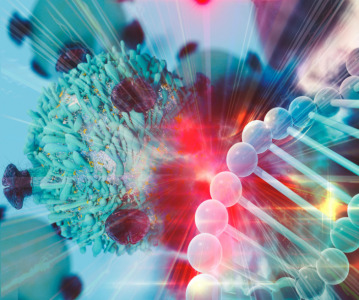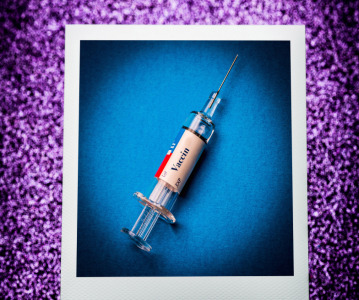New ambr 15 fermentation micro-scale bioreactor system provides enhanced microbial strain screening

New ambr 15 fermentation micro bioreactor system designed to enhance microbial strain screening applications.
The system offers parallel processing and walk-away control of 24 micro bioreactors.
Sartorius Stedim Biotech (SSB) has introduced the new ambr 15 fermentation system, an automated micro bioreactor system designed to enhance microbial strain screening with advanced capabilities supporting fed-batch microbial cultures.
The new system, based on the gold-standard ambr 15 micro bioreactor technology, has been designed to meet the requirements of microbial fermentation. It comprises 24 single-use stirred micro bioreactors (each with an 8–12 mL working volume) integrated to a user-friendly, automated workstation. The system offers parallel processing and walk-away control of 24 micro bioreactors, providing fermentation scientists with efficient, consistent results from an enhanced early stage screening platform.
ambr 15 fermentation has been designed to deliver high oxygen transfer rates, rapid pH and feed additions and is ideally suited for assessing the effects of different strains with microbial cultures. The ambr 15 fermentation measures pH and DO every 12 seconds and there are pumped liquid lines for base and feed addition in each micro bioreactor, enabling tight pH control and a semicontinuous feed supply. Additionally, the 10-mL working volume allows multiple samplings throughout the fermentation run to assess culture growth and protein production, thus providing more detailed process understanding.
The single-use micro bioreactor vessel contains an impeller suitable for fermentation and provides enhanced capability compared to shaking culture systems. The pH range of 6–8 is ideal for biopharm E. coli applications and cultures with similar requirements. As the ambr 15 vessels are single use and supplied sterile this eliminates cleaning and sterilization time, thus decreasing turnaround times between runs by many hours.
Dr Barney Zoro, ambr Product Manager at SSB explained: “Scientists have been trying to model microbial fermentation and screen microbial strains using shake plates and flasks but these devices are poor early-stage models as they are not able to achieve representative cell densities, and do not allow monitoring and control of pH or DO. With these issues in mind, we developed ambr 15 fermentation and have data showing system consistency, repeatability and predictive selection of strains. This demonstrates that the system is an excellent tool for enhanced screening applications and we are confident that fermentation scientists will significantly reduce their time and resource demands when performing enhanced microbial strain selection studies using an ambr 15 fermentation system.”
Related News
-
News Moderna to buy OriCiro Genomics in USD $85 million deal
Pharmaceutical company Moderna acquires genomics services company OriCiro Genomics, based in Tokyo, Japan, to boost mRNA therapeutics development and manufacturing portfolio. -
News New year, new prices: at least 350 drugs in USA to see price increases in January
Drugmakers such as Pfizer, GSK, BMS, AstraZeneca, and Sanofi are planning to raise prices for at least 350 unique drugs in the United States in early January. -
Sponsored Content 2023 Pharma Trend Outlook: Innovation, Resilience, and Pharma 4.0
Download our 2023 Pharma Trends Outlook report to discover the trends set to shape the pharmaceutical landscape in the new year, with expert opinions and insight from across the pharmaceutical value chain. -
News Strategic partnership between AstraZeneca and G42 Healthcare to increase pharmaceutical manufacturing in Abu Dhabi
A comprehensive, long-term partnership agreement between AstraZeneca and G42 Healthcare is set to enhance local drug manufacturing in Abu Dhabi, UAE, and bolster pharmaceutical manufacturing innovation within the country. -
News CordenPharma joins sustainability initiative to achieve Net Zero
The CDMO has joined the environmental initiative looking to align private sector companies with those aims upheld by the Paris Agreement to reduce global warming. -
News AstraZeneca acquires Neogene in shift into cell-based cancer therapies
AstraZeneca has recently announced that it will be acquiring the biotechnology company Neogene Therapeutics as part of it’s expansion into cell-based cancer treatments.
-
News A mRNA universal flu vaccine is in early stages of development
Researchers from the University of Pennsylvania have developed a universal flu vaccine using nanoparticle encapsulated mRNA. -
News Biovac partnership to increase African vaccine manufacturing capabilities
South African biopharma company Biovac signs a partnership deal with the International Vaccine Institute to develop and manufacture an oral cholera vaccine for both the African and global market.
Recently Visited
Position your company at the heart of the global Pharma industry with a CPHI Online membership
-
Your products and solutions visible to thousands of visitors within the largest Pharma marketplace
-
Generate high-quality, engaged leads for your business, all year round
-
Promote your business as the industry’s thought-leader by hosting your reports, brochures and videos within your profile
-
Your company’s profile boosted at all participating CPHI events
-
An easy-to-use platform with a detailed dashboard showing your leads and performance
.png)


.png)



.png)